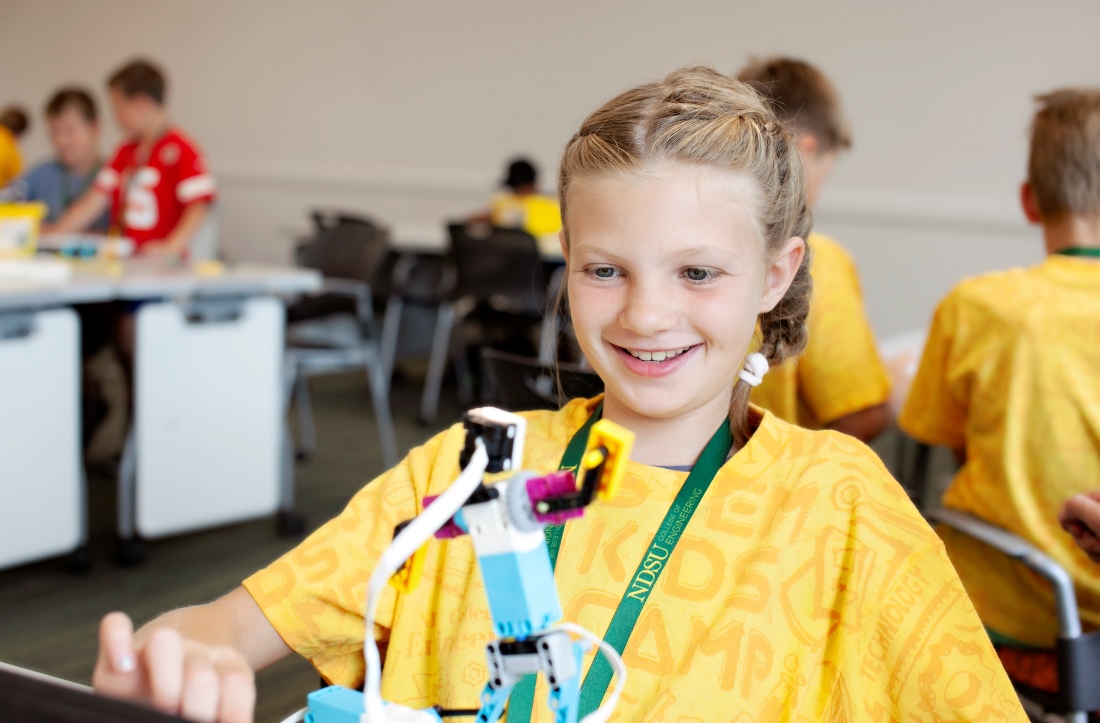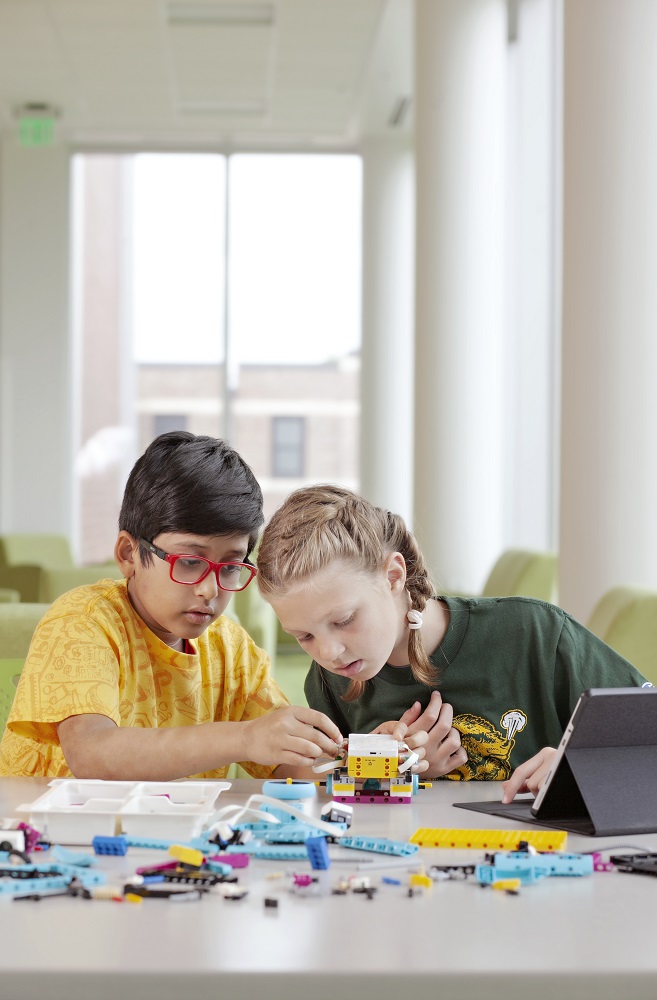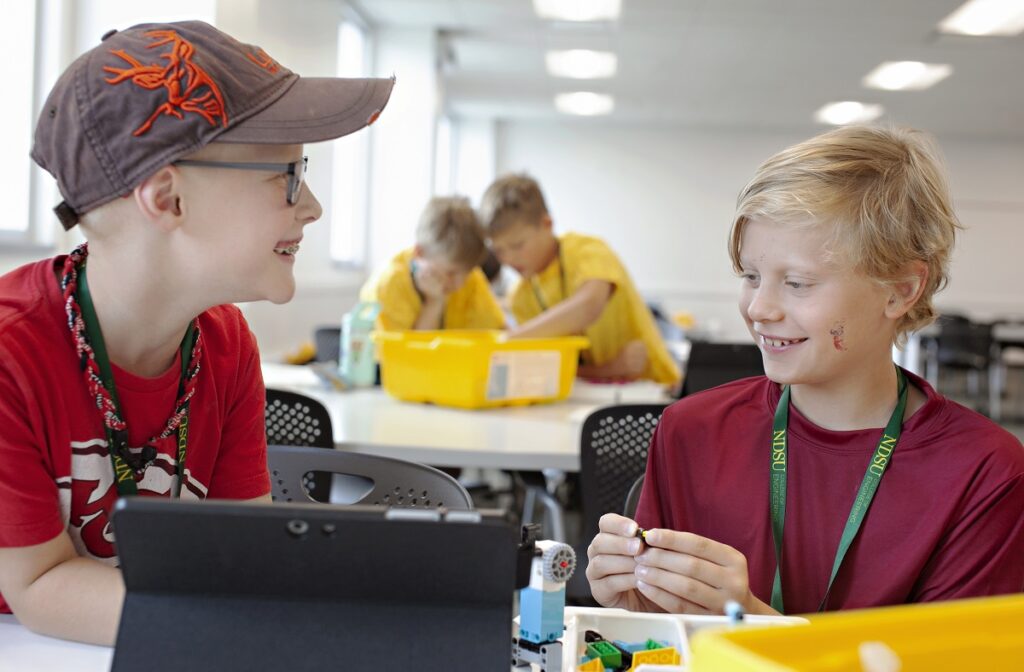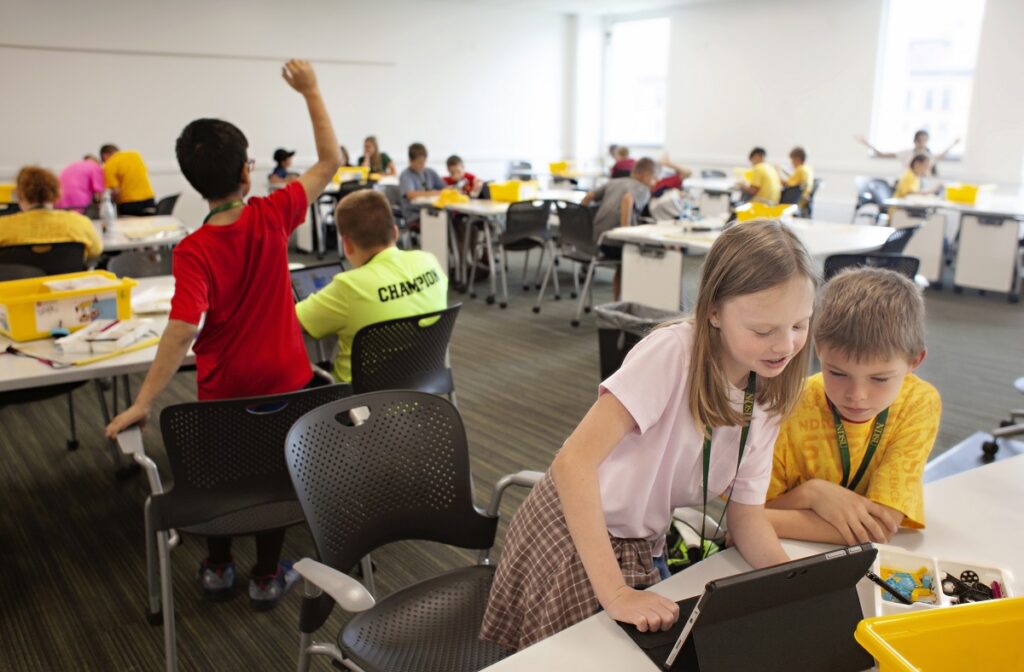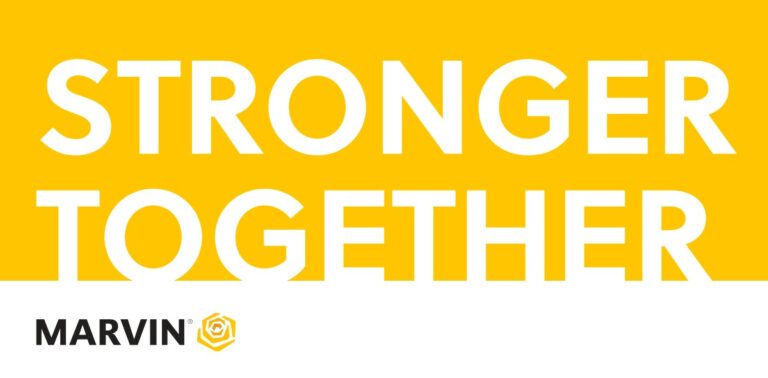Marvin’s partnership with NDSU is a testament to the power of community, innovation, and the belief that anything is possible.
Read MoreCity Superheroes

Trung and Ying introduced sixth through eighth grade students to civil engineering concepts, from buildings to bridges, rivers to pipelines, and more in the City Superheroes class. They began the week by simulating the formation of rivers, making channels out of sand, and creating flooding conditions to mimic the movement of water through the Red River watershed.
On the second day, the students built their own paper cities connected by roads and bridges. Then, disaster struck; the city superheroes became the city villains. What horror befell their handcrafted metropolises, you might ask?
“Some stuff we’re not proud of,” Grant, a sixth grader, joked. He was referring to a contraption he and his friend Sam, also a sixth grader, had built to launch popsicle sticks at their city.
“They were very creative,” Ying said, laughing. “I was very proud of them.”
The class continued to build on students’ understanding of city infrastructure. They learned how water flows through pipes, and on the last day, Ying explained how pipelines can accrue defects.
“Pipes can bend and become another shape. They can be dented. Chemical reactions can cause corrosion and erosion,” she said, “but it can be hard to find damages.”
This is where pipeline inspection gauges (PIGs) come in handy. Grant and Sam immediately dove into the construction of their own robotic smart PIGs, laying out each of the pieces and patiently following along with an instruction manual.
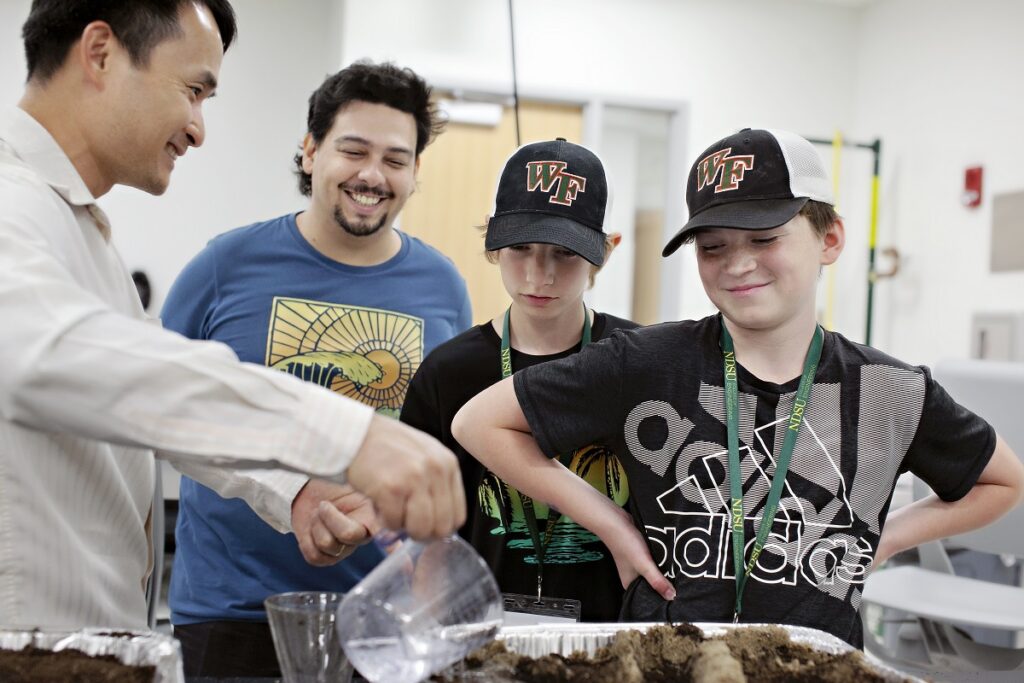
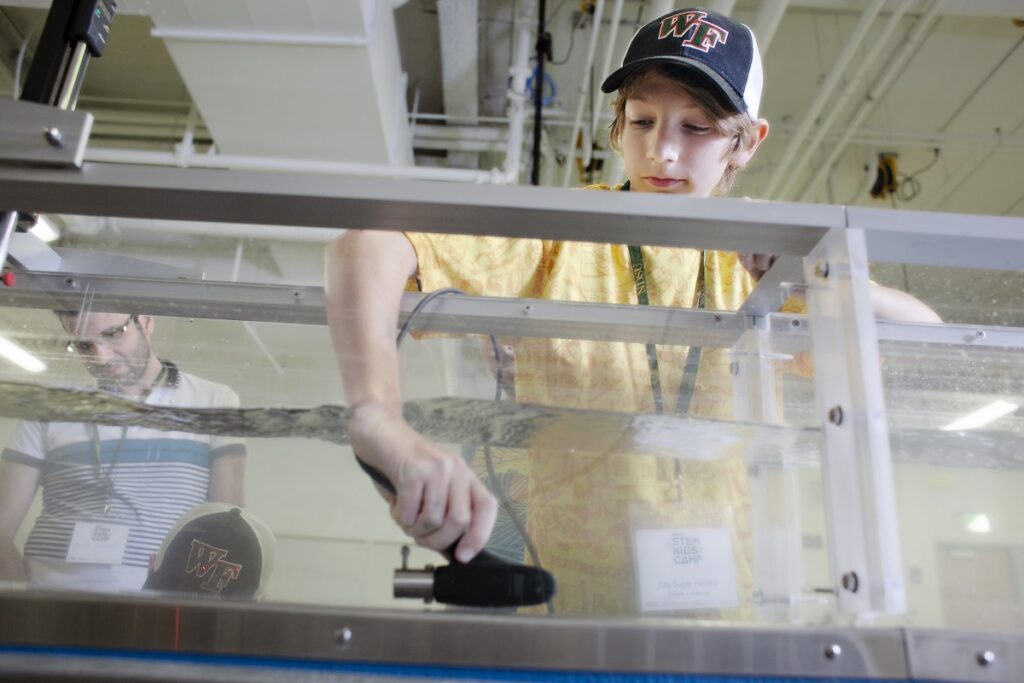
“Take your time,” Sam said, giving advice to someone building a robot for the first time. “There’s a lot of things that you don’t want to mess up — say you put a part in the wrong spot, and you don’t realize. You have to pay attention to which pieces are which. I mean, there could be like one thing different, and it does something completely different. You want to know what you’re doing.”
Trung sees immense value in giving students the chance to explore engineering-based activities beyond what they might be exposed to in everyday life, but he also sees the STEM Kids Camp as an important learning opportunity for faculty. As STEM subjects become a greater priority in K-12 classrooms, and technology evolves and becomes more widely distributed, upcoming generations will need to be taught according to their unique needs and points of view.
“We want to understand their way of interacting with the material, because they live in a very different world than where we grew up,” Trung said. “We want to understand their curiosity, their viewpoint, so we can adapt and improve our future lectures, because they’re going to be the people who come to our college in the next six or seven years.”
